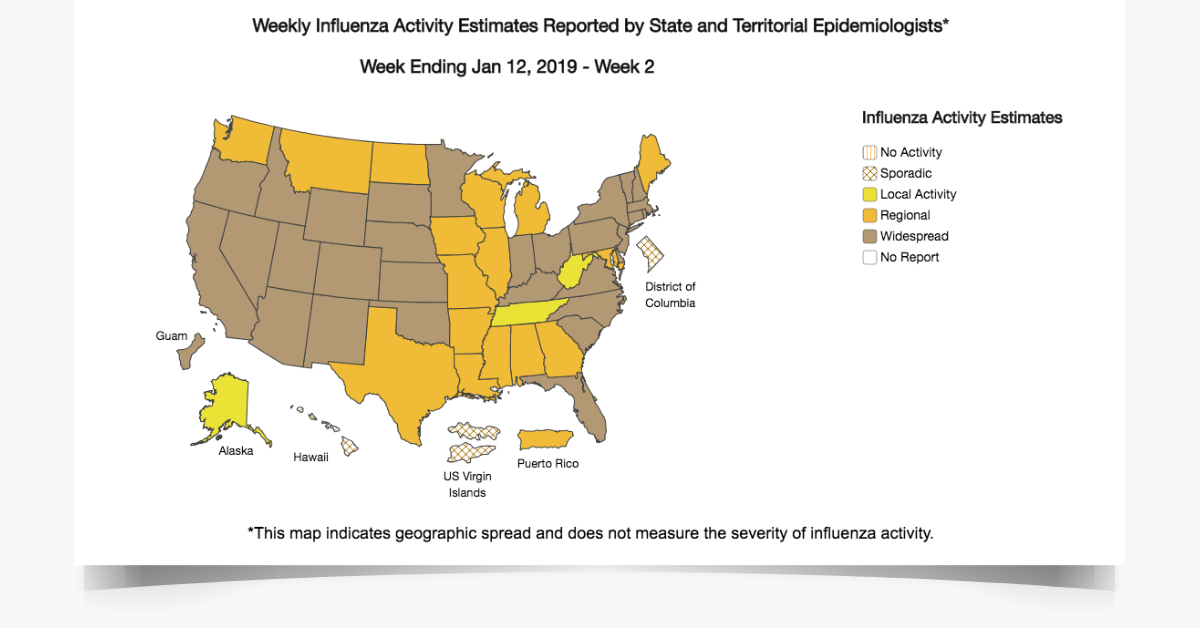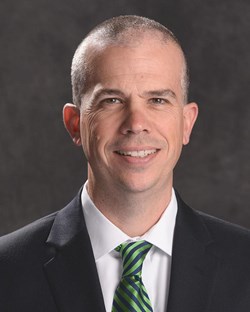Flu Season is Here—What You Need to Know
Keep your Health System Healthy
Happy New Year and wishing all our readers a healthy 2019!
Each January we see signs of the New Year starting as holiday decorations come down, gym memberships go up, and resolutions are still fresh in our minds. Unfortunately, another tell-tale sign of the New Year is the prevalence of influenza (flu)—and like past years, we are starting the new year with flu season well under away.

Many readers may recall addressing the challenges of the 2017-2018 flu season. The virulent H3N2 flu strain claimed 80,000 American lives and led some media outlets to describe hospital emergency departments as “war zones.” Hospitals took extraordinary measures—opening up alternative care venues and triage tents in hospital parking lots. After a slow start to the season, the flu is now wide-spread, although this year it is a less virulent H1N1 strain. Communications from the Center for Disease Control and Prevention (CDC) continues to warn of the flu effects on populations, especially the young, elderly, and immunocompromised.


You can track the flu, with CDC’s Weekly Influenza Map | Image from CDC.gov
Are you prepared?
We can't change the fact that flu season is here. And so, it’s important to be prepared--whether it’s a surge in capacity or a full-scale natural disaster.
Disaster readiness is a year-round mindset. Over the past year health systems activated for less predictable, real-world events such as Hurricane Florence and Michael, the Camp Fire, and the Alaskan Earthquake, and during man-made tragedies such as the Pittsburgh synagogue shooting. In approaching the flu season, we have a benefit of foresight and seasonality. We can take our disaster readiness experiences and apply it with consistency and reliability to prepare for when the flu season is here in full force.
Regardless of the strain—or how soon the flu season gets started—the reality is we have a Flu Disaster every year. And why we approach the flu season with a variety of preparedness activities. Flu vaccination programs, hand-hygiene efforts, and respiratory precaution protocols are all part of a defense against transmission of the virus’ spread. The readiness activities should also include organizational and operational preparedness.
TeleTracking is committed to providing our clients, clinicians and caregivers with the tools needed to manage disasters with an all-hazards approach. The flu season is one of those events where embedded TeleTracking tools are ready to support you.
Here are three important best practices to support your health system when the flu season is here:
- Use patient attributes for those who confirm as influenza positive
- Use portal boards for visual management of influenza screened and vaccinated patients
- Use care progression indicators as patients recover from the flu and meet milestones
As we make our way through this year’s flu season, it is a good time to review the tools we have available to us each day. We know during times of crisis our performance has a natural tendency to decline. Using the same workflows and systems during a crisis that we use on a daily basis can help to prevent that decline. Optimizing our health system resources are important each and every day. During times of known utilization, such as when the flu season is here, it becomes critical to provide timely access for patient care. When we work together across our health systems in a cohesive, coordinated model the outcomes improve, patients receive the care they need, and caregivers have the time they need to deliver that care.
Working together we can achieve our mission, to ensure no patient ever waits for the care they need.
More about this blog post
About the Patient Flow Expert
 Scott Newton
Scott Newton
DNP, RN, MHA, EMT-P
Director, Product Management
Dr. Scott Newton has more than 30 years of experience in healthcare—working as an EMT, a nurse, an educator and a patient flow command center leader—he is also a trusted adviser and thought leader.
Scott has deep knowledge of the healthcare system and understands that success is tied to high reliability, just-in-time responses, and responsible solutions—that it’s about getting it right the first time for patients and clinicians.
A graduate of the Doctor of Nursing Practice program at Johns Hopkins School of Nursing, Scott built a Command Center as an output of his doctoral project and believes that as healthcare continues to evolve, patient flow will play an even more prominent role across the care continuum.
Be sure to follow Dr. Newton on twitter!
#PatientAccess | #CommandCenter | #NoPatientWaits | #FluSeason | #DisasterReadiness
We're glad you're enjoying our resources! Please tell us more about you to access our full library.
This will allow us to personalize your experience on TeleTracking.com. Of course, we will never sell your information and you can opt-out at any time. Need help now? Contact a Patient Flow expert.
Leaving the website
You're about to leave this website, to one of our affiliates or another information source.